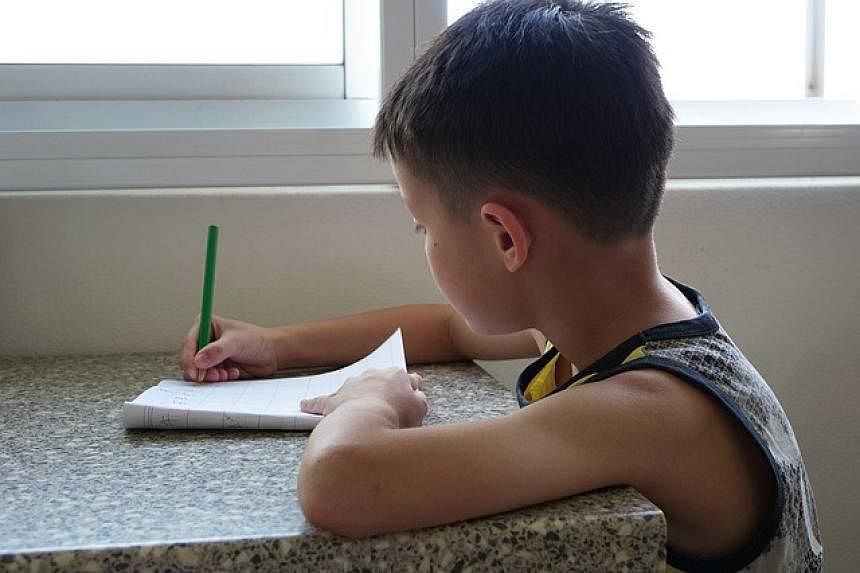Children today are growing up surrounded by technology. So it is easy to assume they will be able to write effectively using a keyboard.
But our research suggests this is not necessarily true.
We need to actively teach students to be able to type as well as write using paper and pen or pencil.
Our research team has published two recent studies investigating children’s handwriting and typing.
In a study published in April, we looked at Year 2 pupils and their handwriting and keyboard writing. This study involved 544 pupils from 17 primary schools in Perth, Western Australia.
We assessed how easily pupils wrote stories using paper and pencil compared with writing stories using a laptop. We found they produced longer and higher-quality handwritten texts. This was based on 10 criteria, including ideas, vocabulary, spelling and punctuation.
These findings echoed our December 2023 study, where we did a meta-analysis of studies published between 2000 and 2022. These compared the effects of writing by hand or keyboard on primary pupils’ writing.
We looked at 22 international studies involving 6,168 participants from different countries, including the United States, United Kingdom, Canada and non-native English-speaking countries such as Germany and Portugal.
Our analysis showed primary pupils produce higher-quality texts using paper and pen or pencil than when using a keyboard.
Why are kids stronger in handwriting?
In Australia – as in many other countries – children are taught to write by hand first. Keyboard writing is added as an extra skill only once handwriting has been mastered.
We know it is very important to continue to teach children to write by hand, despite so many advances in technology.
Studies show teaching handwriting in the first years of schooling is connected to improved spelling and greater capacity to write well and quickly in primary and later years of schooling.
Other studies show using handwriting to create texts (such as notes) promotes our capacity to learn and memorise information.
Need to learn how to use keyboards
We know it is also important for students to be able to write quickly and accurately using a keyboard.
They will need to use keyboards to write for study, work and life as they get older. This process needs to become automatic so they can concentrate on the content of what they are writing.
Our research has consistently shown young people who can spell and write quickly and accurately are able to produce longer and higher-quality pieces of writing. Other studies have shown that when children face difficulties in handwriting or typing, they may often avoid writing altogether and develop a negative mindset towards writing.
Learning to type is complex
As our research suggests, students also need to be taught how to use a keyboard. Much like handwriting, it requires a complex set of cognitive, visual and motor processes, requiring frequent practice and instruction.
It involves learning the location of the keys on a keyboard, combined with spatial skills of positioning, and moving fingers to press the keys in the correct sequence. Students need time to practise so they can move beyond the “hunt and peck” motion (where you have to hunt visually for each key).
Research also suggests teaching about keyboards is more effective when spread out over several years.
First, children need to understand letter locations on the keyboard and the position of their hands, which can be developed via online practice exercises monitored by teachers. Accuracy and speed should not be emphasised until students have mastered where the letters are.
Which comes first?
While students ultimately need to be able to write both on paper and using digital devices, there are unanswered questions about the order in which handwriting and typing should be taught or whether they should be taught together.
We also don’t yet know if it matters whether students are learning to write via keyboards, touch typing on tablets or by using stylus pens (devices that look like pencils and write via screens).
More research is needed to support teachers, students and families.
How to help your child
Despite these unknowns, there are many things we can do to help students learn how to write on paper and using a keyboard. These include:
- Dedicating time for practice: Teachers can build regular times in class to write and send home small tasks (such as writing a shopping list, finishing a story or describing a monster).
- Joining in: Instead of “policing” your children’s writing, show them what you write in your everyday life. As you write, you can talk about what you will write (planning) and you can share ideas about how you can make your writing clearer or more exciting.
- Talk about your mistakes and find ways of correcting your writing: When adults talk about their errors or doubts, they make them a natural part of the process.
- Ask children to read what they have written: This provides opportunities for correction and celebration. Praise children’s bold attempts, such as using new words or experimenting with expressions.
- Give children choice: This gives children some control. For example, they can choose a topic, they can mix art and letters, or they can choose paper or keyboard.
- Display their writing: Make your children’s writing visible on your walls or fridge or as wallpapers on your devices to instil a sense a pride in what they have done.
- Anabela Malpique is a senior lecturer at Edith Cowan University in Australia; Deborah Pino Pasternak is an associate professor in early childhood education and community at the University of Canberra in Australia; and Susan Ledger is a professor and the head of school – dean of education at The University of Newcastle, New South Wales, in Australia. This article was first published in The Conversation.

